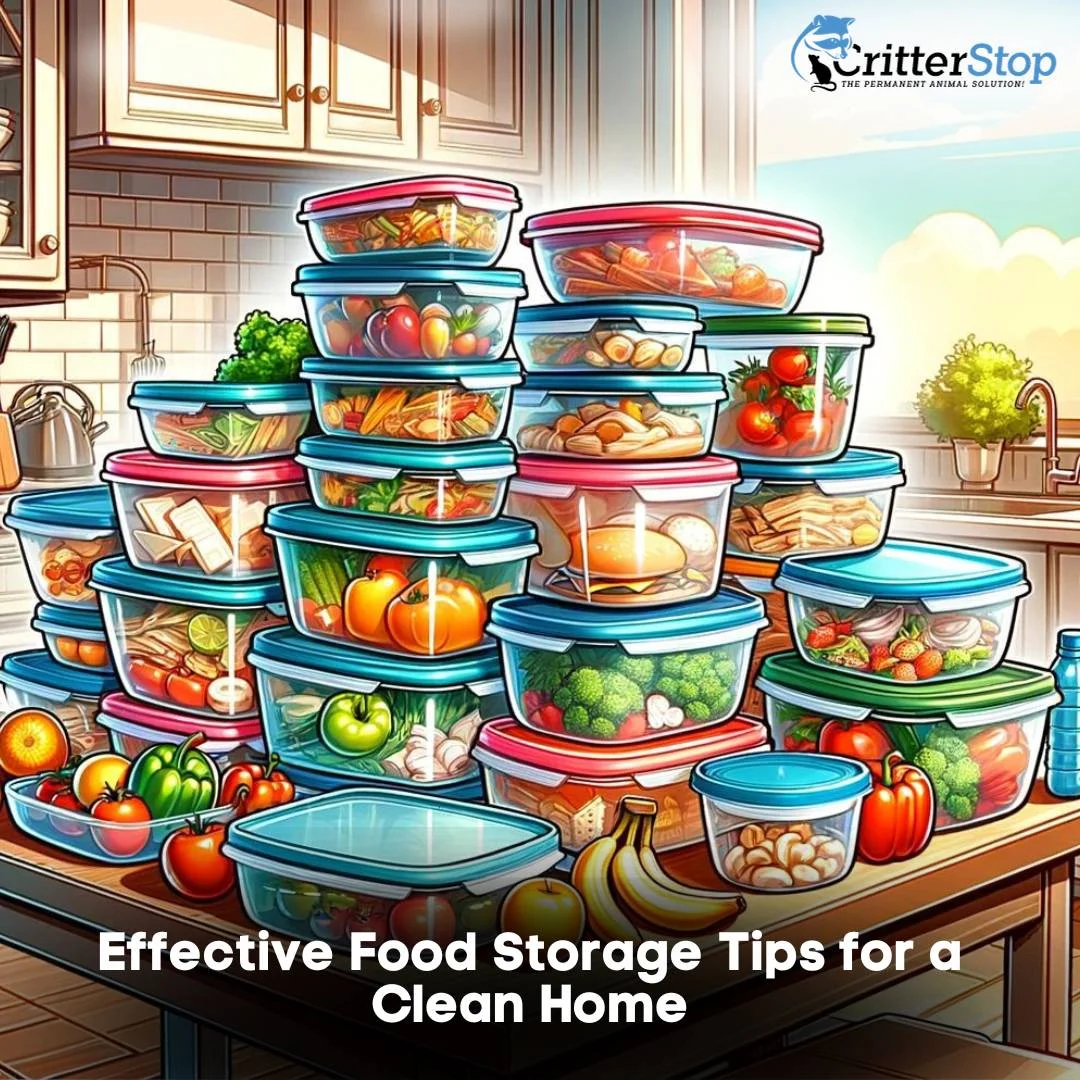
In today's fast-paced world, maintaining a clean and tidy home can sometimes feel like an overwhelming task. However, with the right strategies and habits, it is possible to achieve an organized living space that is both inviting and hygienic. One area that often gets overlooked but plays a crucial role in maintaining cleanliness is food storage. In this article, we will explore some effective food storage tips that will help you keep your home clean and tidy.
Maintaining a clean and tidy home goes beyond just sweeping the floors and wiping down countertops. It involves adopting a proactive approach to cleaning and organizing your living space. By implementing a few essential cleaning tips, you can ensure that your home remains spotless.
When it comes to maintaining a clean and tidy home, consistency is key. Developing a cleaning routine that fits into your schedule and sticking to it will make a significant difference. Set aside specific days for certain tasks, such as dusting, vacuuming, and mopping. Breaking down your cleaning tasks into manageable chunks will prevent them from becoming overwhelming.
In addition to following a regular cleaning routine, it's important to pay attention to often neglected areas. Take the time to clean hard-to-reach spots, such as the tops of shelves and cabinets. Dust and dirt tend to accumulate in those areas, leading to a buildup of grime over time. By regularly tackling these overlooked areas, you can maintain a truly spotless living space.
Furthermore, make it a habit to declutter frequently. Clutter not only makes a space look untidy but also creates a breeding ground for dust and allergens. Regularly assess your belongings and get rid of items you no longer need or use. Adopting a minimalist mindset will help you maintain a clutter-free living space, promoting a sense of calm and serenity.

Now that we've discussed the importance of consistency and decluttering, let's delve into some essential cleaning tips that will help you achieve a spotless living space.
First and foremost, investing in high-quality cleaning tools and products is essential. From microfiber cloths to vacuum cleaners with HEPA filters, having the right tools can make a world of difference in the effectiveness of your cleaning efforts. Additionally, using eco-friendly and non-toxic cleaning products will not only keep your home clean but also ensure the well-being of your family and the environment.
When it comes to cleaning different surfaces, it's important to use the appropriate techniques. For example, when dusting, start from the top and work your way down to prevent dust from settling on already cleaned surfaces. When cleaning windows, use a streak-free glass cleaner and a lint-free cloth for a crystal-clear shine.
Another often overlooked aspect of maintaining a spotless living space is the proper care and maintenance of your furniture and upholstery. Regularly vacuuming upholstered furniture and using fabric protectors can help prevent stains and keep them looking fresh. Additionally, rotating cushions and fluffing pillows will help maintain their shape and prolong their lifespan.
The kitchen is often considered the heart of the home, and keeping it clean is crucial for maintaining a healthy environment. One effective way to achieve this is by implementing proper cleaning techniques and strategies.
Start by creating a cleaning schedule specifically for your kitchen. Allocate time each day to wipe down surfaces, including countertops, stovetops, and kitchen appliances. Regularly sweep and mop the floors to prevent dirt and grime buildup. By staying on top of these tasks, you can ensure that your kitchen remains sparkling clean.
When it comes to food storage, it's essential to practice proper organization. Keep your pantry tidy by using clear containers and labels. This not only makes it easier to locate items but also prevents food waste due to items getting lost or forgotten. Additionally, regularly checking expiration dates and disposing of expired products will help maintain a clean and safe kitchen environment.
Pro Tip: Invest in airtight containers for storing dry goods, such as flour, sugar, and cereal. This will help maintain their freshness and keep pests at bay. Furthermore, regularly cleaning your refrigerator and freezer, including removing expired or spoiled food, will help prevent unpleasant odors and ensure the longevity of your perishables.

Are you tired of bread going stale just a few days after you purchase it? If so, a bread box might be the solution you've been searching for. A bread box is a kitchen accessory specifically designed to extend the freshness of bread, keeping it soft and delicious for longer periods.
A bread box creates an environment that regulates temperature and humidity levels, ideal for preserving bread. The enclosed space protects bread from excess moisture and prevents it from drying out too quickly. By storing your bread in a bread box, you can enjoy fresh and flavorful slices for a more extended period.
Beyond preserving the freshness of your bread, a bread box also helps keep your kitchen organized. Instead of leaving bread out on the counter, where it can attract pests or become stale quickly, a bread box provides a designated storage space that keeps your loaf protected and easily accessible.
When shopping for a bread box, look for one made of durable and high-quality materials. Opt for a size that suits your needs and consider the aesthetics of your kitchen as well. A bread box can be a functional and stylish addition to your countertop.
Dealing with unpleasant odors emanating from your trashcan can be a frustrating experience. However, with a few simple steps, you can eliminate these odors and enjoy a fresher-smelling kitchen.
The first step in combating trashcan odors is to ensure proper trash bag hygiene. Make it a priority to empty your trash regularly, especially when it contains organic waste or food scraps. Leaving trash in the can for an extended period allows bacteria to grow and produce foul odors.
After emptying the trash, thoroughly clean the inside of the can using warm soapy water. Pay attention to the lid and the bottom of the bin, as these areas tend to accumulate residue and bacteria. For a deeper clean, consider using a mixture of vinegar and water to eliminate any lingering smells.
To help control odors in the future, consider using scented trash bags or placing a dryer sheet at the bottom of the can. These simple tricks can go a long way in maintaining a fresh-smelling kitchen.

Food storage is an essential aspect of maintaining a clean and tidy home. If you find yourself struggling with mismatched containers and lids, it may be time to upgrade your food storage system.
Investing in high-quality food containers offers numerous benefits. Not only do they provide better organization, but they also help keep your food fresher for longer. High-quality containers are typically airtight, preventing air and moisture from seeping in and causing food spoilage.
When choosing food containers, opt for those made of plastic or glass that are free of harmful chemicals, such as BPA. These materials are safe for storing both hot and cold food items. Look for containers with secure lids that create a tight seal to prevent leaks and spills.
Additionally, having a set of matching containers will make your refrigerator and pantry look more organized and visually appealing. Say goodbye to the frustration of searching for the right lid or container, and hello to a clutter-free food storage experience.
Produce is a valuable part of any diet, and ensuring its freshness is essential. By following a few simple tips, you can prolong the shelf life of your fruits and vegetables and avoid unnecessary waste.
First and foremost, it's crucial to store fruits and vegetables separately. Fruits emit ethylene gas, which can accelerate the ripening process of vegetables. Keeping them apart will help prevent premature spoilage.
For fruits that continue to ripen after being picked, such as bananas and avocados, store them at room temperature until they reach the desired ripeness. Once ripe, transfer them to the refrigerator to slow down further ripening.
Leafy greens, on the other hand, should be stored in a slightly damp paper towel in the refrigerator. Moisture will help maintain their crispness. For other vegetables, store them in the designated crisper drawer, which provides optimal humidity levels.
By following these storage guidelines, you can ensure that your produce remains fresh and flavorful for longer, reducing waste and saving money.
Cooking is not just about combining ingredients; it's about creating a harmonious blend of flavors. If you're looking to take your culinary creations to the next level, consider incorporating bay leaves into your recipes.
Bay leaves have a unique flavor profile that adds depth and complexity to dishes. They are often used in simmered or slow-cooked recipes, such as soups, stews, and braises. Adding a bay leaf while cooking infuses the dish with a subtle herbal note that enhances the overall flavor.
To use bay leaves, simply add them to the pot during the cooking process. Be sure to remove the bay leaves before serving, as they can be tough and unpleasant to eat.
Bay leaves can also be used to enhance the flavor of rice or pasta dishes. Simply add a leaf or two to the cooking water and remove before serving. The delicate aroma of the bay leaves will infuse the grains, resulting in a more flavorful final dish.
When using bay leaves, remember that a little goes a long way. Start with one or two leaves and adjust the amount according to your taste preferences.
Effective food storage is a crucial component of maintaining a clean and tidy home. By following these tips, you can optimize your food storage practices and enhance your overall living space. From implementing essential cleaning routines to utilizing specialized storage containers, each strategy plays a part in creating a hygienic and organized home environment. So, why wait? Start implementing these effective food storage tips today and enjoy the benefits of a clean and tidy home.